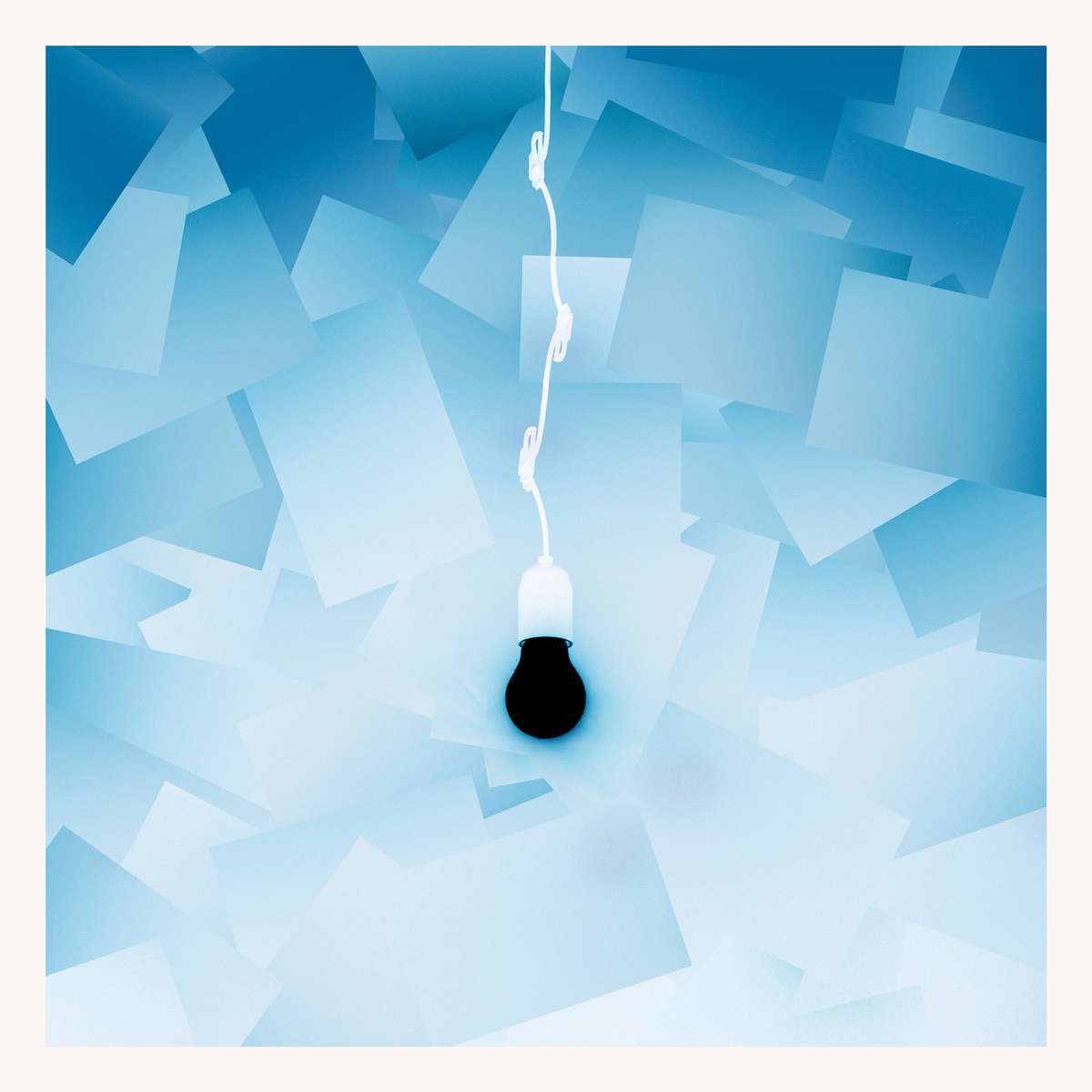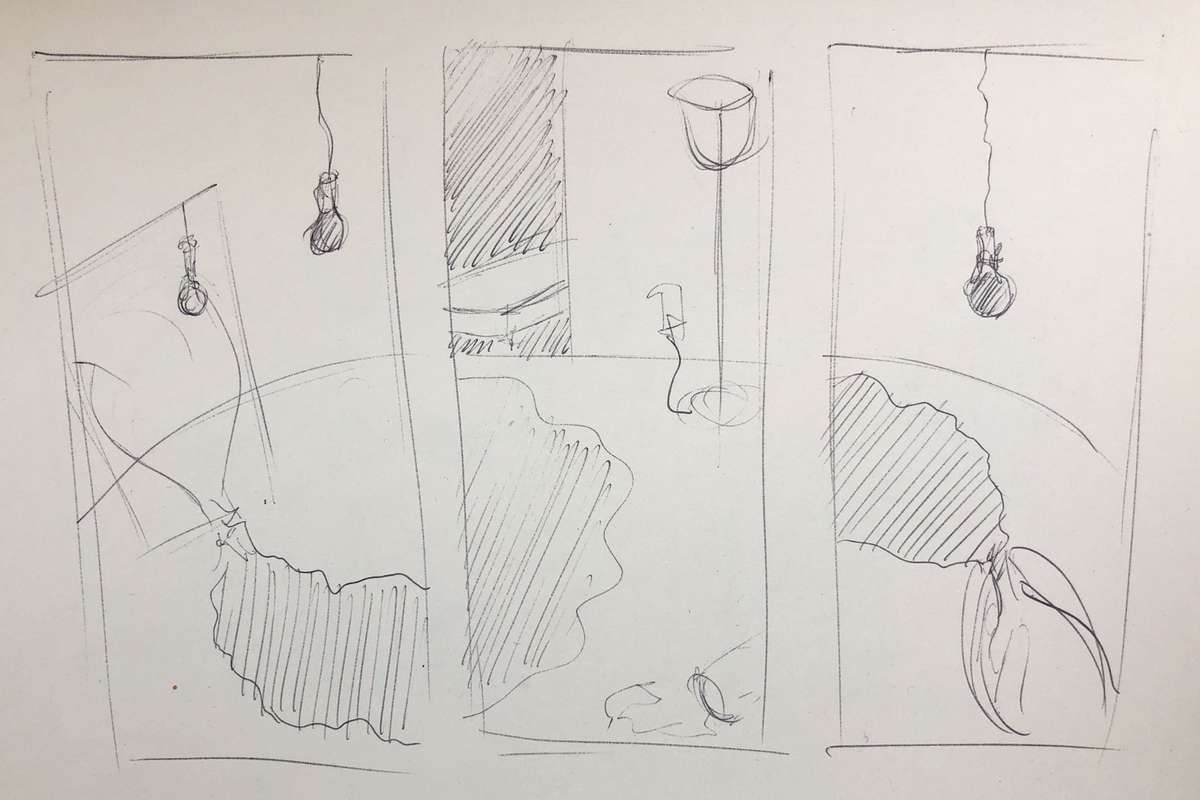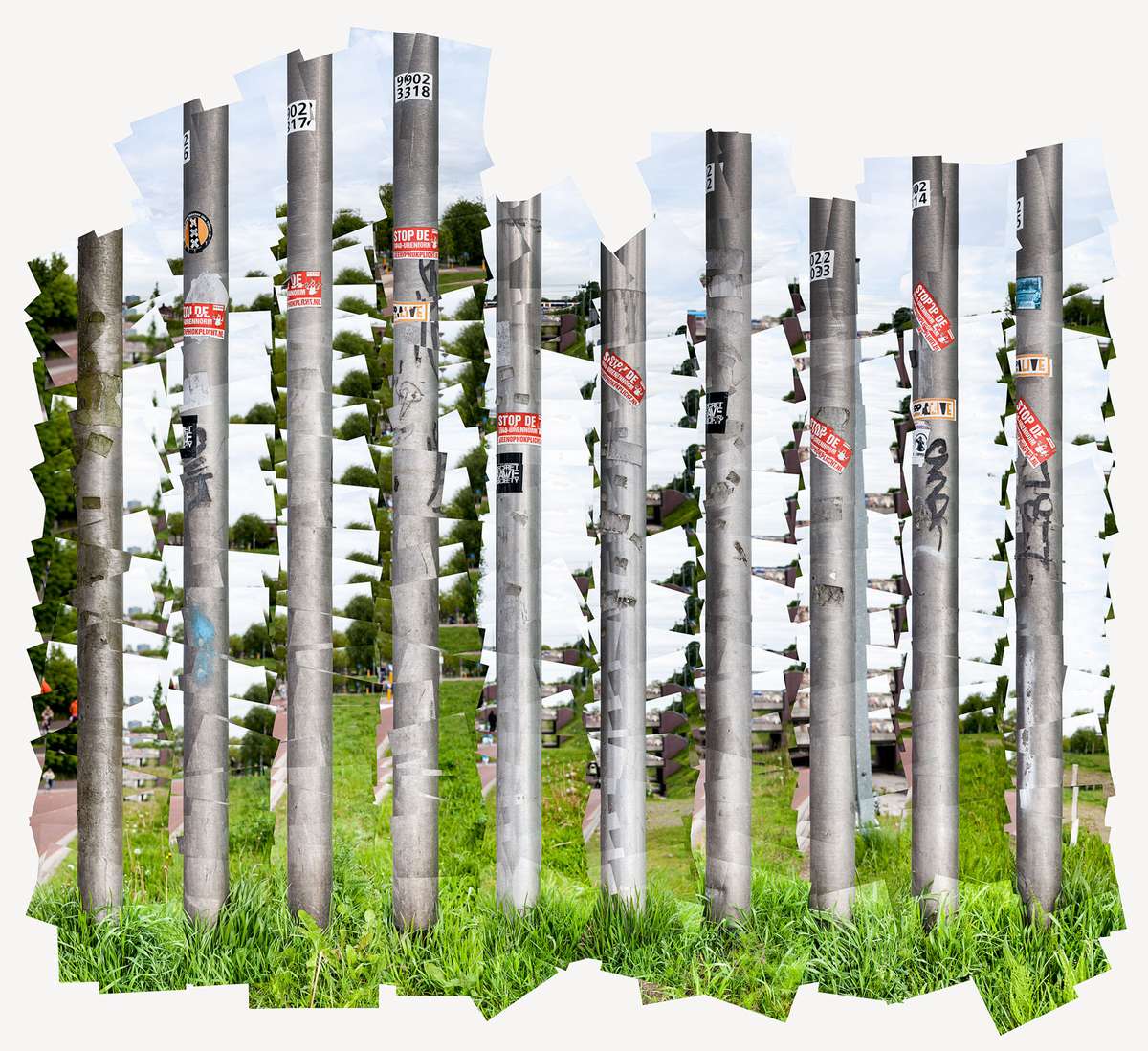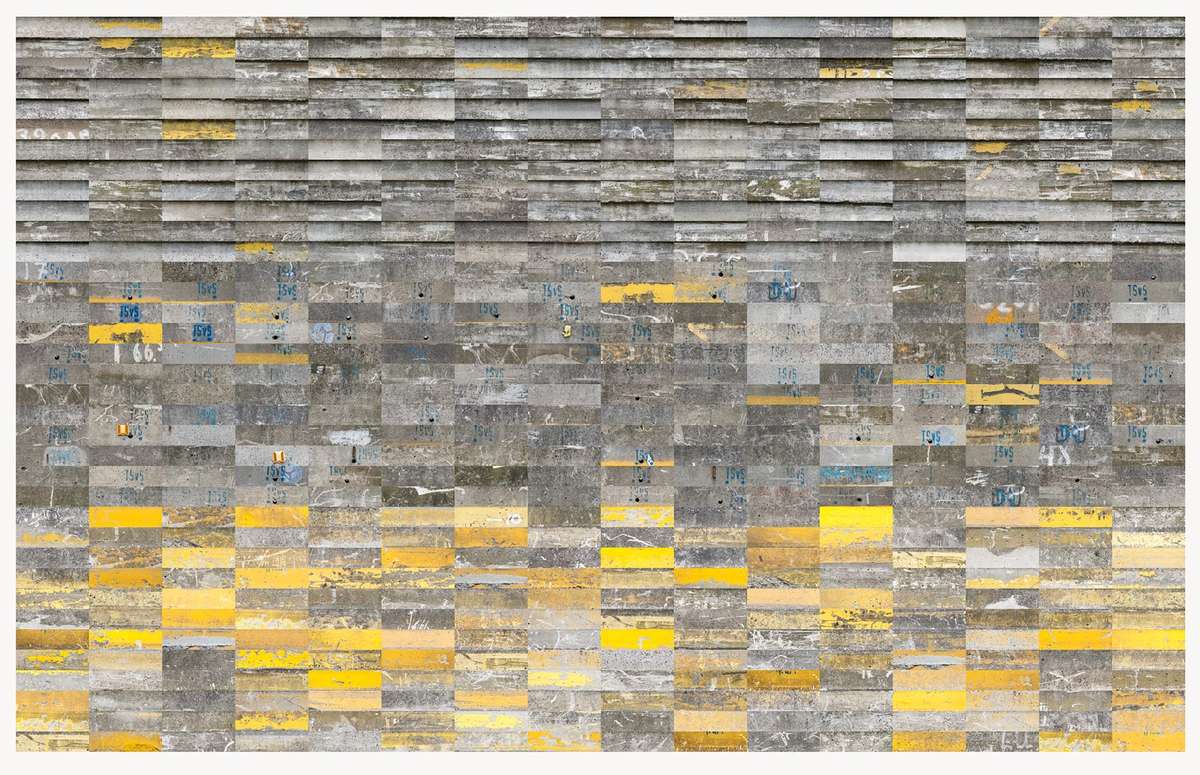

Francis
About the print
Initially, there was a set of photos of a lightbulb which I took at a neighbor’s house who was busy at the time with some home improvement. I said wait as I looked at the bare lightbulb hanging from the ceiling then ran and got my camera.
At the time, I was tending to collect objects photographically, breaking them down the way Hockney did, without having any real idea of where or when they might be used. In this case, though, the lightbulb was something I wanted to photograph because of my interest in Bacon’s life and work at the time. I was already planning some ridiculously ambitious photo-collage ideas that were essentially large triptychs à la Bacon which made use of a number of common pictorial elements from his work other than the figure: the curved baseboard of an interior space, mirrors, mattresses, indicating arrows, shadows leaking across the floor like pools of ink and lightbulbs dangling into view from the top of the picture frame.
The second impulse for the image — using the snapshots of the neighbor’s lightbulb in the negative, essentially turning the light to darkness — was the obvious metaphor at-hand for depicting the loss I felt when Bacon died. I’m not talking about a personal loss, of course. I’m not talking about a feeling I had in 1992, the year he died. I’m talking about a reaction to the depiction of his death in the documentary film from 2006 titled Bacon’s Arena. In the film’s final scene, the last days of Bacon and the moment of his death are presented. Essentially, he died alone under the care of the Handmaids of Maria in a small room in a private clinic in Spain where he had been admitted with severe respiratory problems at the age of 82 while visiting the country, a crucifix on the wall above his head.
I remember the day he died. It was very sudden. He had a cardiac arrest at about 9 in the morning. He couldn’t breathe and then he stopped completely. They tried to resuscitate him but the attack was tremendous. He was dead. — Sister Mercedes1
Within the narrative structure of the film, the death scene seemed such an enormous — almost unacceptable — contrast to the vigor, fury and bombast of the man depicted in the ninety minutes of film that had preceded this final scene.
There’s a camera shot in room 417 made many years later of the empty hospital bed in which Bacon died. There’s silence. I don’t remember any artificial lighting in the shot, just daylight falling across a carefully made hospital bed. If there was lighting in the room, I imagined no fixture, no decoration. Just a bare wire falling from the ceiling in the middle of the room toward a lightbulb which was out.
1. Adam Low, Bacon’s Arena, 2006




